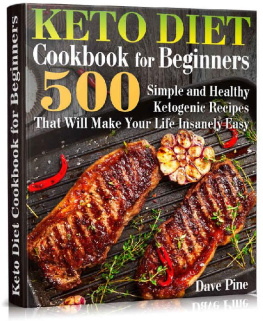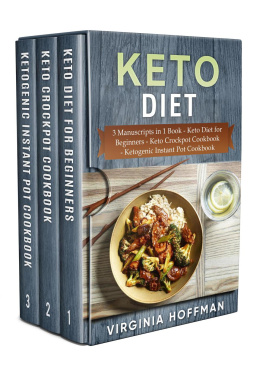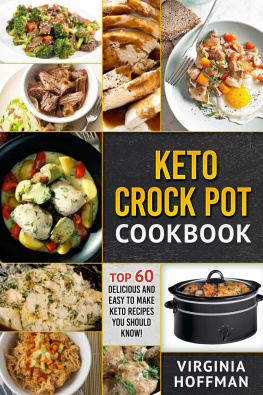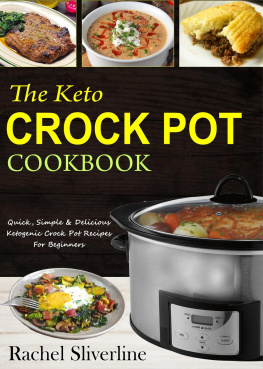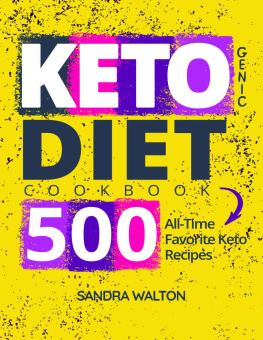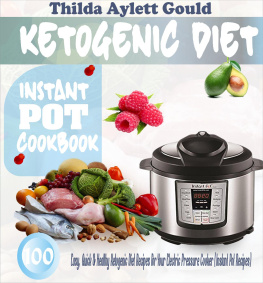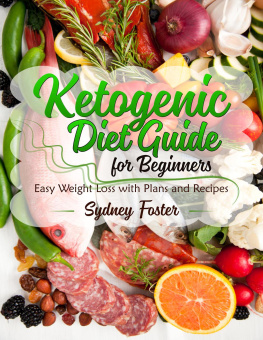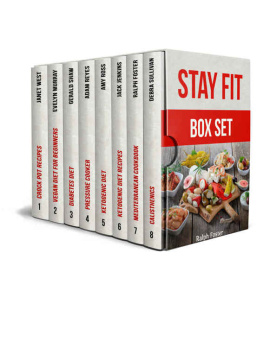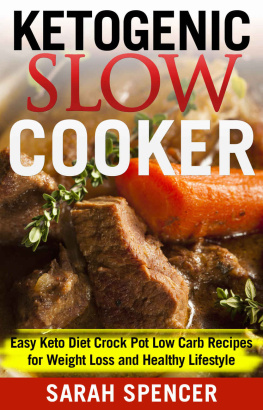The Keto Crock Pot Cookbook
Quick And Easy Ketogenic Crock Pot Recipes For Smart People
Copyright 2017 - All rights reserved.
The contents of this book may not be reproduced, duplicated or transmitted without direct written permission from the author.
Under no circumstances will any legal responsibility or blame be held against the publisher for any reparation, damages, or monetary loss due to the information herein, either directly or indirectly.
Legal Notice:
This book is copyright protected. This is only for personal use. You cannot amend, distribute, sell, use, quote or paraphrase any part or the content within this book without the consent of the author.
Disclaimer Notice:
Please note the information contained within this document is for educational and entertainment purposes only. Every attempt has been made to provide accurate, up to date and reliable complete information. No warranties of any kind are expressed or implied. Readers acknowledge that the author is not engaging in the rendering of legal, financial, medical or professional advice. The content of this book has been derived from various sources. Please consult a licensed professional before attempting any techniques outlined in this book.
By reading this document, the reader agrees that under no circumstances are is the author responsible for any losses, direct or indirect, which are incurred as a result of the use of information contained within this document, including, but not limited to, errors, omissions, or inaccuracies.
Table of Contents
Introduction
Greetings! Thanks for joining us here at, The Keto Crock Pot Cookbook.
This is a book especially for people who have taken the Ketogenic Diet under their wing, and who want to put their Crock Pot to good use.
Perhaps you have recently purchased your first Crock Pot and are looking for some ideas and inspiration for Crock Pot-friendly Ketogenic recipes? In that case, youve come to right place, and I hope you find some great ideas!
I am a total food lover, Keto dieter, and Crock Pot user. I am not a nutritionist, professional chef, or doctor. However, I am a great cook and recipe creator, with a thorough working knowledge of the Ketogenic Diet. I have compiled the information in this book based on my understanding, and have attempted to word it in a user-friendly way! Theres lots of science and complicated stuff involved in the Ketogenic Diet, but I have aimed to provide the need-to-know information in a practical and useful way. There are so many great sources online if you want to explore the more complicated side of the diet!
The recipes in this book are simple, adaptable, Keto-friendly, and easy to create in your Crock Pot. You will find recipes for appetizers, breakfast, soups & stews, meat, seafood, and dessert!
Go forth, have fun, and lets cook together!
Chapter 1: The Ketogenic diet
What is the Ketogenic diet?
The Ketogenic Diet is a low-carb diet which nudges the body into a metabolic state called Ketosis. When you reach Ketosis, your body starts to produce Ketones, which are used as an energy source. The Ketogenic diet relies heavily on the correct intake of macronutrients (carbs, fats, proteins) - very low carb, high fat, and moderate protein.
Here is a rundown of how the Ketogenic diet works inside your body (in laymans terms!): when you eat carbs, your body uses them as its first source of energy. This includes all starches, sugars (including the sugars in fruit!) and grains. This means that the fat you consume is stored away and is not used as energy. When you deprive your body of carbs, something pretty amazing happens. First, your body will find energy by using stored-up glycogen (glycogen is what carbs are converted to before they are stored in your body). Once the glycogen has been used up and the carb-flow has run dry, your body turns to stored fats to use as energy. Once stored fats are being used as the primary energy source, your liver gets the message to start producing Ketones to be used as an extra energy hit. When this happenswoohoo, youve reached ketosis!
I wont bore you with more picky details, as Im sure youve read up on the Ketogenic diet enough already. Lets get on to the important stuff, what you can and cant eat!
What you can eat
The Ketogenic diet is very strict when it comes to what you are allowed to munch on. If you eat the wrong things (i.e. carbs and sugars), then Ketosis is ruined and you must start again. It sounds strict and cumbersome, but its actually easier than you might think. Here are the foods you are allowed to eat:
Non-starchy vegetables
Choose vegetables that grow above ground. Dark, leafy greens are the best choices as they are very low in carbohydrates and are packed with nutrients. Fill your meals with these veggies:
Spinach
- Kale
- Chard
- Lettuce
- Green capsicums
- Broccoli
- Cauliflower
- Mushrooms
- Green beans
- Cabbage
- Tomatoes
- Eggplant
Berries
Berries are the only fruits you can eat on the Ketogenic diet. Eat small amounts of these berries:
- Raspberries
- Strawberries (eat very sparingly)
- Blackberries
Meat
Incorporate moderate amounts of meat into your diet, to provide you with protein and iron. Because protein must be eaten in moderation, smaller portions of meat are ideal. Choose these meats:
Bacon
- Minced lamb
- Minced beef
- Chicken thigh
- Chicken breast (eat small amounts as its quite high in protein)
- Lamb leg
- Roast beef
- Whole roast chicken
Seafood
Fish and seafood are great choices to provide you with fats, oils, and moderate protein. Choose these fishy creatures:
- Fresh salmon
- Oily white fish
- Shellfish
- Tinned tuna
- Tinned salmon
Dairy
Dairy products are allowed on Keto, as long as they are full-fat, unsweetened, and low carb. Milk is not recommended on the Ketogenic diet, so stick with cream instead. Choose these dairy products:
- Full-fat cream
- Full-fat unsweetened Greek yogurt
- Cream cheese
- Sour cream
- Soft cheeses (brie, mozzarella)
- Hard cheeses (cheddar, parmesan)
Nuts and seeds
Nuts and seeds are allowed on the Ketogenic diet, as long as they are eaten in moderation. They are great as snacks and sprinkles to add healthy fats and yummy texture. Choose these lower-carb nuts and seeds:
- Macadamia nuts
- Pecans
- Brazil nuts
- Walnuts
- Almonds
- Hazelnuts
- Pine nuts
- Chia seeds
- Flax seeds
- Pumpkin seeds
Oils and dressings
Oils and fats which are categorized as saturated and monounsaturated are the best options to choose for dressings and cooking. These include:
- Butter
- Olive oil
- Coconut oil
- Avocado oil
Alcohol
You can drink alcohol on the Keto diet as long as you are very careful about what you drink, and how much. When you first start Keto, I recommend that you completely cut alcohol from your diet while your body gets used to the change. After a few weeks, you could incorporate small amounts of low-carb alcohol such as plain vodka. Check the labels on wine bottles to make sure you arent purchasing a carbo-loaded, sugar-laden tipple! A small glass of low-carb wine wont harm your Keto efforts, just be sure to limit yourself to a glass or 2. Using wine in your cooking is fine, as once it has been spread between a few servings, the amount you consume is very little.
Next page

